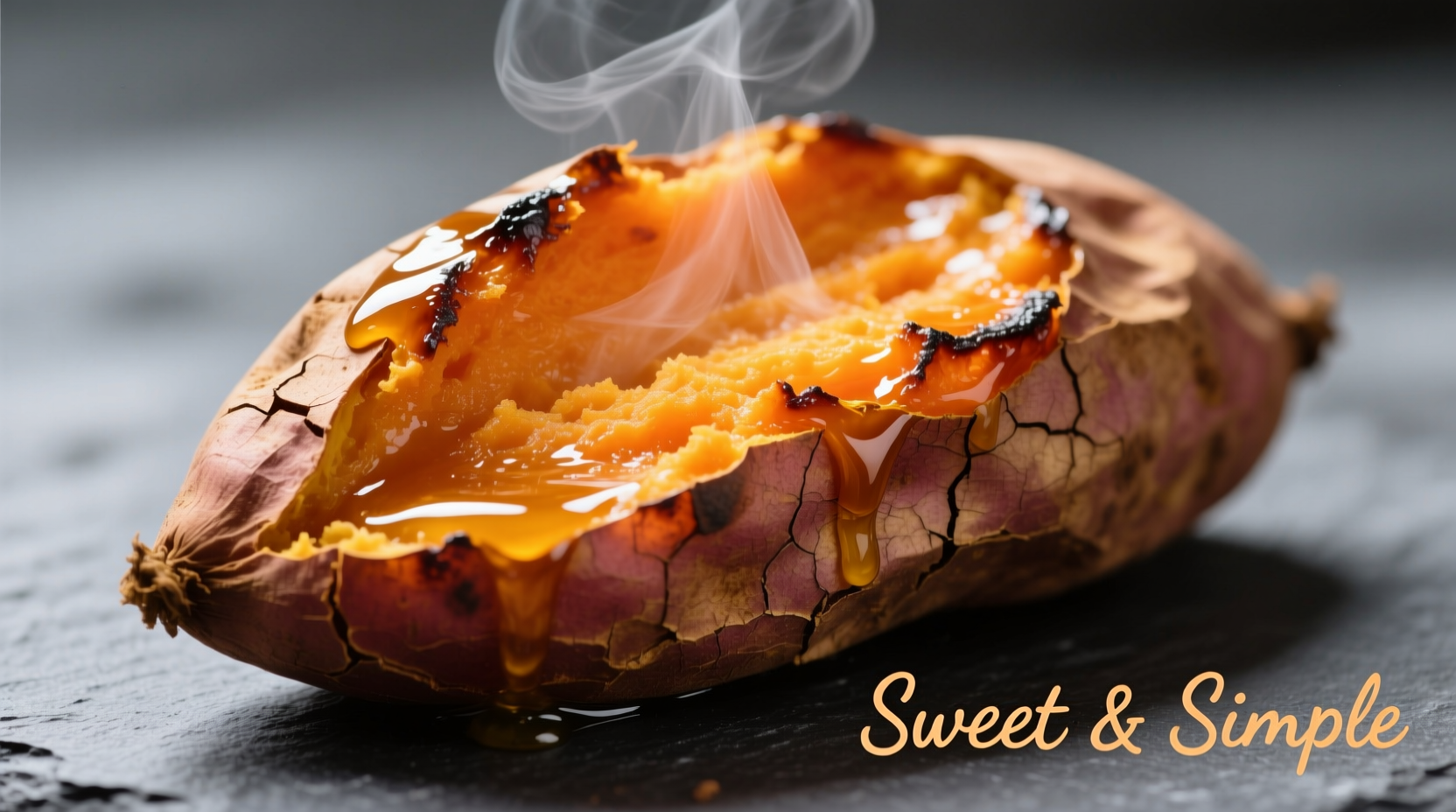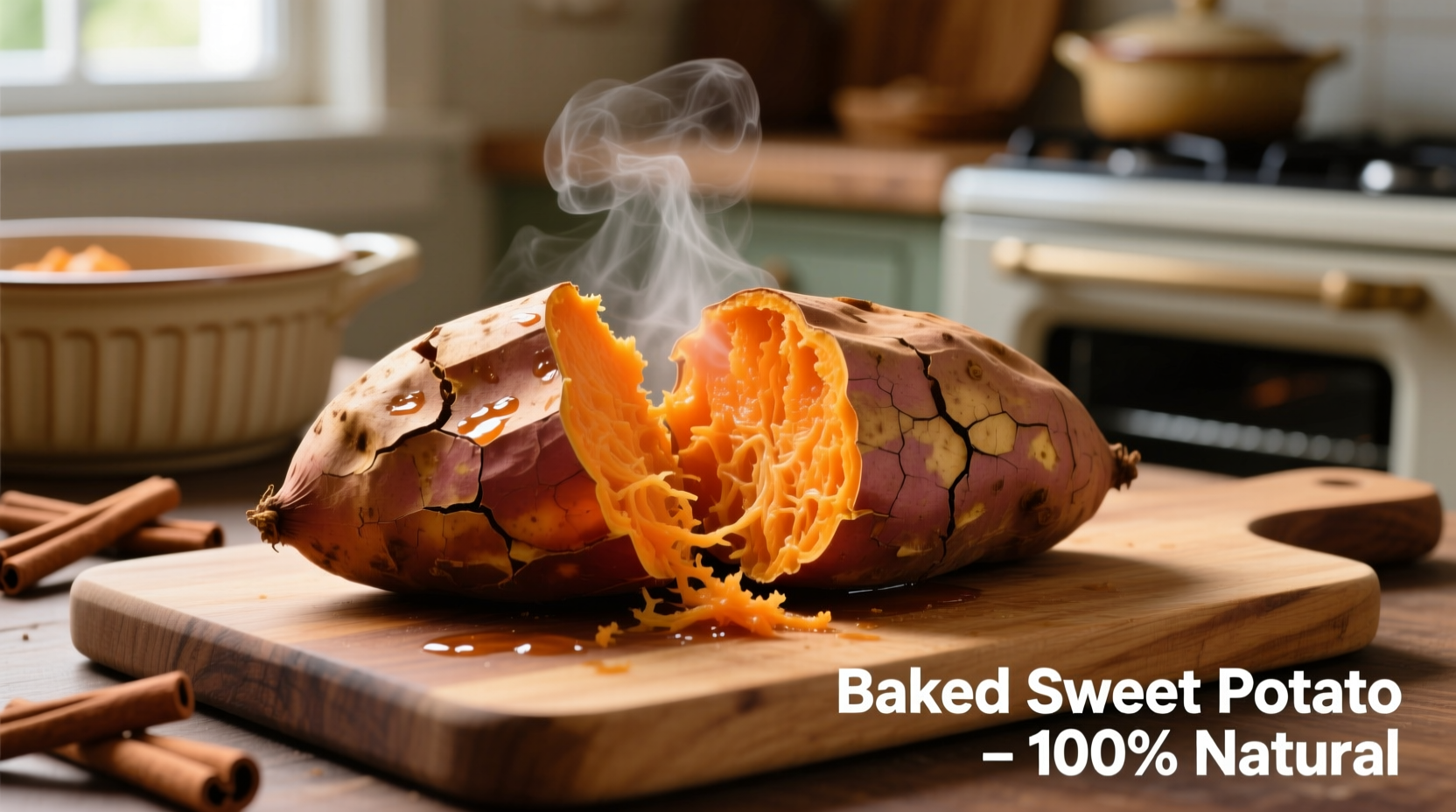Discover the science-backed method professional chefs use to transform ordinary sweet potatoes into caramelized, nutrient-rich delights. This guide reveals precise temperature controls, timing adjustments for different sizes, and flavor-enhancing techniques you won't find in basic recipes.
Why Baking Outperforms Other Cooking Methods
While boiling and microwaving offer speed, baking unlocks superior flavor through the Maillard reaction and caramelization. As sweet potatoes bake, their starches convert to maltose (a natural sugar), creating that signature sweet, nutty flavor. According to USDA research, baking preserves more beta-carotene than boiling, with only 5% nutrient loss compared to 30% when boiled.
| Cooking Method | Time Required | Nutrient Retention | Flavor Development |
|---|---|---|---|
| Baking | 45-60 min | 95% beta-carotene | Excellent caramelization |
| Boiling | 20-30 min | 70% beta-carotene | Mild, watery texture |
| Steaming | 30-40 min | 85% beta-carotene | Moderate sweetness |
| Microwaving | 5-12 min | 90% beta-carotene | Least developed flavor |
This comparison, based on USDA Nutrient Data Laboratory findings, shows why baking delivers the best balance of nutrition and flavor development.
Selecting the Perfect Sweet Potatoes for Baking
Not all sweet potatoes bake equally well. Choose firm, smooth-skinned potatoes without bruises or soft spots. For optimal baking results:
- Orangeflesh varieties (like Jewel or Beauregard) offer classic sweet flavor and moist texture
- White-flesh varieties (such as Hannah) provide milder taste and drier texture, better for savory applications
- Avoid refrigerated sweet potatoes, which develop hard centers when baked
Size matters more than many realize. Medium potatoes (5-7 ounces) bake most evenly. Larger potatoes often have undercooked centers while smaller ones become too soft.
Preparation Techniques That Make a Difference
Proper preparation sets the stage for perfect results:
- Wash thoroughly with a vegetable brush to remove dirt from crevices
- Dry completely - moisture prevents crisp skin formation
- Pierce 4-5 times with a fork to allow steam escape (prevents bursting)
- Optional enhancement: Rub skin with 1/2 tsp oil and sprinkle with salt for crispier skin
Contrary to popular belief, wrapping sweet potatoes in foil slows cooking and creates a steamed texture rather than baked. For authentic roasted flavor, bake directly on the oven rack with a baking sheet on the rack below to catch drips.
Precision Baking: Temperature and Timing Guide
Temperature control is critical for optimal starch conversion. The ideal baking temperature range is 375°-425°F (190°-218°C). At 400°F (204°C), the internal temperature reaches the perfect 205°F (96°C) for complete starch conversion to sugars.
Use this timing chart as your reference:
| Size Category | Weight | Baking Time | Internal Temp |
|---|---|---|---|
| Small | 4-5 oz | 35-45 min | 205°F |
| Medium | 6-8 oz | 45-55 min | 205°F |
| Large | 9-12 oz | 55-65 min | 205°F |
Timing varies based on oven accuracy and potato density. Always verify doneness with both the fork test and an instant-read thermometer. The FDA Food Code recommends cooking vegetables to a minimum internal temperature of 135°F for safety, but sweet potatoes require higher temperatures for proper texture development.

Troubleshooting Common Baking Issues
Even experienced cooks encounter these challenges:
- Undercooked centers: Usually from insufficient time or low oven temperature. Solution: Return to oven in 5-minute increments
- Overly moist texture: Caused by wrapping in foil or underbaking. Solution: Bake uncovered at 425°F for additional 10 minutes
- Burnt skin: Oven running hot or potatoes too close to heating element. Solution: Tent loosely with foil during last 15 minutes
- Uneven cooking: Rotate pan halfway through baking time for consistent results
Remember that sweet potatoes continue cooking from residual heat after removal from the oven. For best results, remove when internal temperature reaches 200°F (93°C) and let rest for 5-10 minutes.
Serving and Storage Recommendations
Maximize flavor with these professional techniques:
- Cut a slit across the top immediately after baking to release steam and prevent sogginess
- Let rest 5 minutes before serving for more even texture
- Enhance natural sweetness with a pinch of flaky sea salt rather than added sugar
- Store leftovers in airtight container in refrigerator for up to 5 days
- Reheat in oven at 350°F for best texture (microwaving makes them rubbery)
For meal prep efficiency, bake multiple sweet potatoes at once and refrigerate. They reheat beautifully and maintain nutritional value better than many prepared vegetables.
When Baking Isn't the Best Option
While baking produces superior flavor, it's not always practical. Consider these context boundaries:
- Time constraints: When you need sweet potatoes in under 15 minutes, microwaving is acceptable
- Mash preparation: Boiling works better for smooth mashed sweet potatoes
- High-altitude cooking: Above 3,000 feet, increase baking time by 25% and lower temperature to 375°F
- Convection ovens: Reduce temperature by 25°F and check 10 minutes early
Understanding these limitations helps you choose the right method for your specific situation while maintaining quality results.











 浙公网安备
33010002000092号
浙公网安备
33010002000092号 浙B2-20120091-4
浙B2-20120091-4